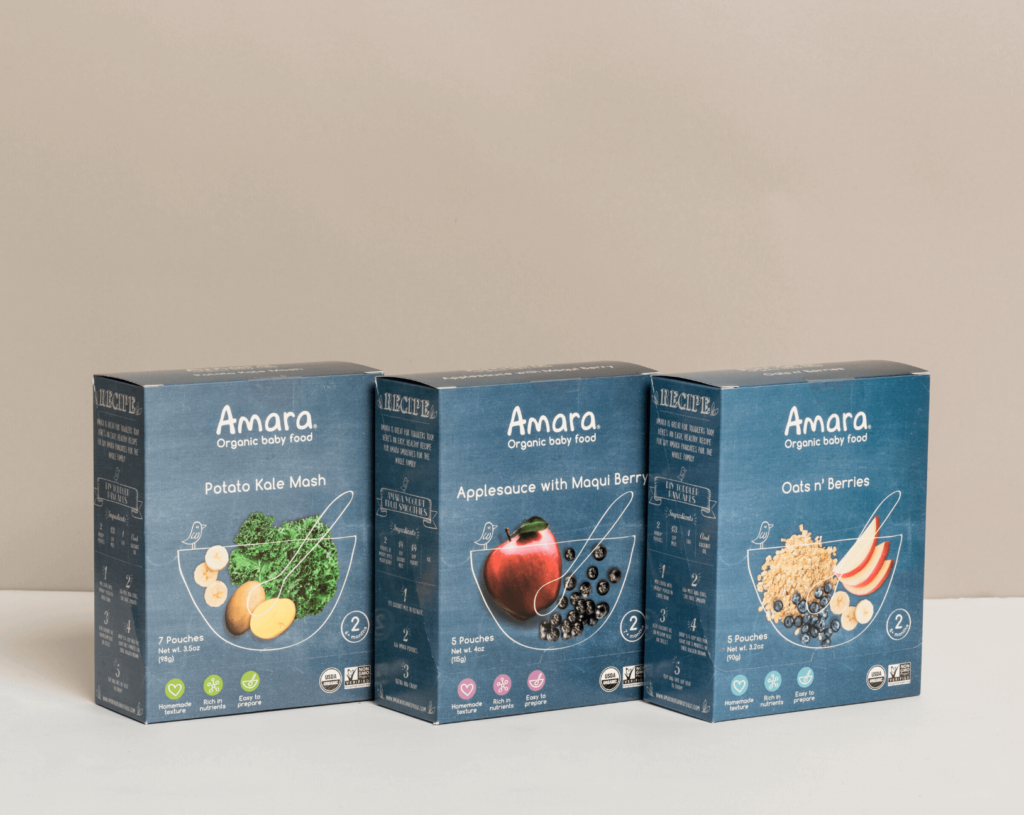
Amara Baby Food Review
I’m coming clean as one of those people who is weirdly obsessed with all-things-food-and-nutrition-related. I love reading and talking about the science of nutrition, healthy eating, food policy, and food culture. I can’t get enough of it — I think it’s fascinating, but also SO important. I won’t go as far as to say “we are what we eat” (cue the eye roll please), but — what and how we eat matters so much. WRT a great many things… because here’s where we’re at in America: nearly 45% of us have at least one chronic “lifestyle” disease.
There’s all kinds of dietary advice out there and more prescribed “regimens” than I care to mention, but at the end of the day, I’m of the mind that the biggest thing, the most important thing and the thing that really hasn’t changed, ever, is to eat real food. That’s why I also think we should try to raise our kids to eat real food as best we can.
Starting right away. As babies.
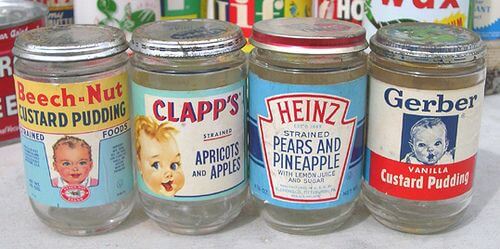
Without getting into the entire history of commercial baby food (suffice it to say — it’s a tale of process and packaging), the reality is that most parents who buy jarred baby food (myself included) do it because it’s easy — not because of taste or quality.
When my babies started solids, I (probably like many families) fed them a hodgepodge mix of convenient baby purees and homemade stuff. Along the way, I tried tons of different brands and just never felt like any of it was… good. There was hardly any difference in taste between separate flavors (I’m pretty sure last time I checked carrots were not supposed to taste like peas), and there’s generally a smattering of uninspired food offerings.
Amara Baby Food: The Overview
I heard about Amara, the new kid on the block, and wanted to give it a try. And, you guys, it’s awesome. Seriously, it’s on a whole different level than other baby food purees I’ve tried (yes, I’ve tried a LOT of baby purees, including the however-many ice-cube-filled-trays of my own and friends’ making…).
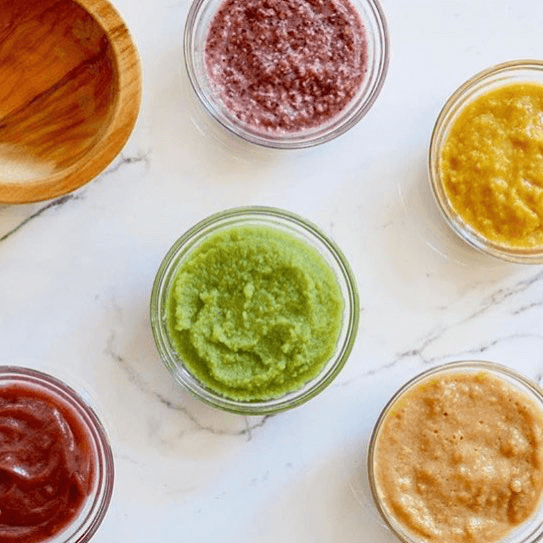
I spoke with Amara’s founder, and my whole family tried it out, and as you can probably already tell — I’m really excited about it. (And just as a reminder, as with all of our content on Lucie’s List, this Amara baby food review is totally unsponsored.)
Here’s the surprise: Amara baby food comes in a powder form. Now, I admit I was initially very skeptical about this — especially the claims about texture — but I promise you won’t be disappointed with the final outcome. You just dump out the powder, mix it with water, breastmilk, or formula, and you’re set. It takes all of 15 seconds to prep. Just like any other baby puree, you can heat it up using traditional methods (stove top, microwave, etc.), or, since you add liquid, the easiest thing to do is use warm water/formula/breastmilk to mix — but you can serve it at whatever temperature you like.
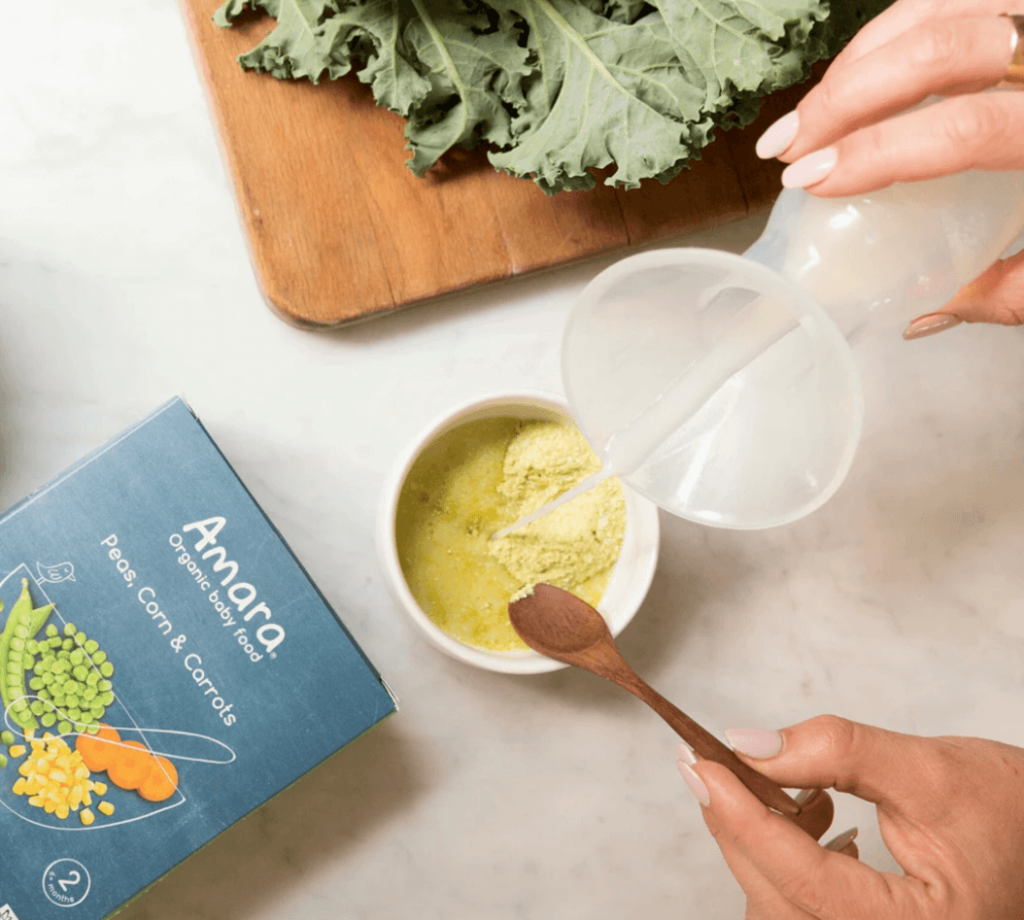
If you want the quick run-down, here it is:
- This food tastes amazing.
- It is “real food” whose nutrients and functional make-up haven’t been totally nuked by over-processing.
- As a result^^, it has lower sugar levels.
- It’s easy to use, at least comparable to other baby food jars (organic or otherwise), and it has such an awesome vision of changing the way we eat (more on that later).
“If we’re going to change the way all of us eat, we have to do it with our kids.”
Jessica Sturzenegger, CEO and co-founder
Preservation Method
Amara uses a special preservation method — they call it “nutrient protection technology” — that essentially takes whole foods and removes the water. The process allows for a shelf-stable food product while still maintaining the natural tastes, textures, and nutrients in the real, whole foods it uses.
Since Amara’s process is proprietary, it’s tough to find third-party data evaluating its claims, but existing research on food preservation methods suggests that food dehydration is an effective way to preserve foods (including leafy greens) without losing a ton of nutrient content (it doesn’t retain everything perfectly, obviously — but it’s pretty darn good). Numerous institutional online course lessons and info sheets also attest to this, and heck, it’s even good enough for NASA.
Even though most mainstream baby food companies (i.e., the ones on the shelf at your local grocery store) stopped adding sugar to their baby food products, most jarred baby foods usually have a pretty high sugar content compared to the actual foods they’re supposed to “be.” This is because they use a repeated high-heat processing method to ensure shelf life, which essentially boils foods down into water and sugar. Think about the difference between eating applesauce vs. eating apple slices. WAY more sugar per serving for the former.
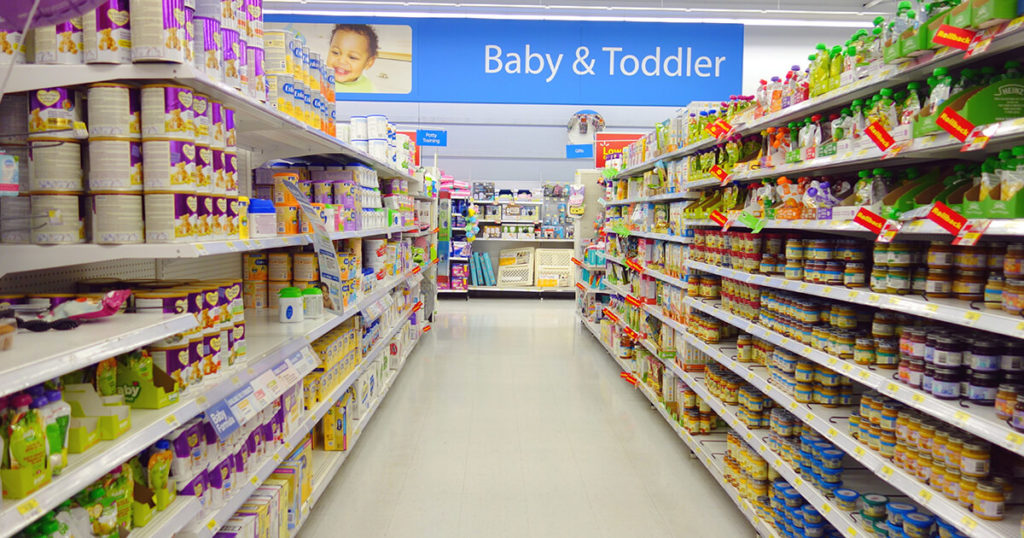
Amara doesn’t use this method — and its baby foods have roughly 50% less sugar than most competitors (this alone!).
For the same reasons, Amara baby foods retain much more of the nutritional contents of their ingredients than your average repeat high heat, processed baby food. As a result of all this, Amara foods have a more “true-to-form” glycemic index.
Taste
Dude, this actually tastes good!
This is all great and compelling, but here’s the part I can’t stress enough: it actually tastes like real, rich, wholesome food. Way better than anything I made my kids when they were babies (Julia Childs, I am not).
And given everything we know and are continuing to learn about how much is happening food-wise during infancy and toddlerhood (has anyone heard of the “flavor window”? Anyone?), food that actually tastes like, well, food, is a really good thing — and may even help you raise adventurous eaters. [See also: The Toddler Feeding Guide.]
Amara offers some single food pouches (banana, mango), but to give you a sense of some of its other food pairings, here are some available options:
- Kale veggie mash
- Sweet potato raspberry
- Black bean sweet corn
- Pumpkin and pear
- Peas, corn, and carrots
These aren’t necessarily crazy exotic, but they’re fun and flavorful, and you need not stick to baby purees for that long anyways — purees are a step along the way to “real” eating.
The Convenience Factor
Many moms I know love the idea of making all their baby’s food (or least serving them homemade food, hah). But the reality is that packaged baby food is easier, and sometimes we need/want it. So we trade some things for convenience.
Fine.
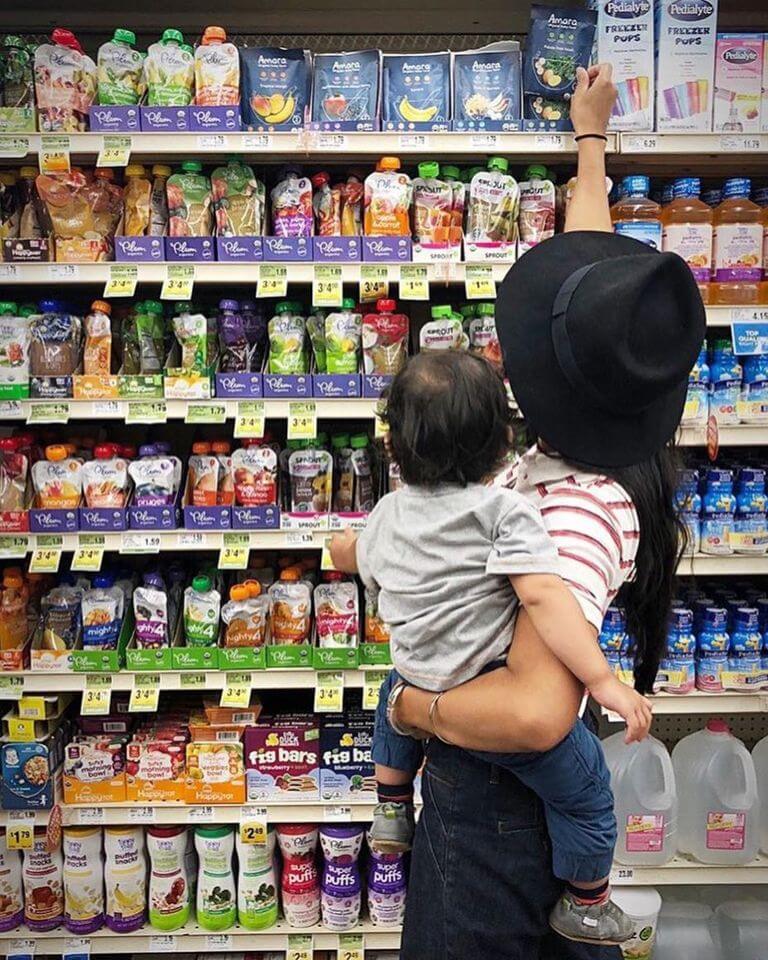
But if you — like the vast majority of American moms purchasing baby food — are buying jarred baby food off the shelf at the supermarket, Amara doesn’t feel like the same trade-off to me (though it is slightly more costly — more on that in a minute).
There are numerous instances when Amara takes the cake:
- traveling/going out-and-about (stashing a packet in your diaper bag is also way better than keeping glass jars of baby food in there… far less can go wrong);
- keeping on hand at grandparents’ homes;
- for babysitters or daycare;
- when you are tight on space (the packets are slim and trim compared to jars)
(The shelf life is 12-18 months, BTW.)
Another neat thing is that if you have an older child, each box comes with a fun “toddler recipe” that’s simple enough for a toddler to work on independently (at least partly), like pancakes or a smoothie. It reminds me of the beautiful tradition Pamela Druckerman describes in Bringing Up Bebe of cultivating a child’s independent appreciation for what goes into preparing yummy recipes early on in the childhood years.
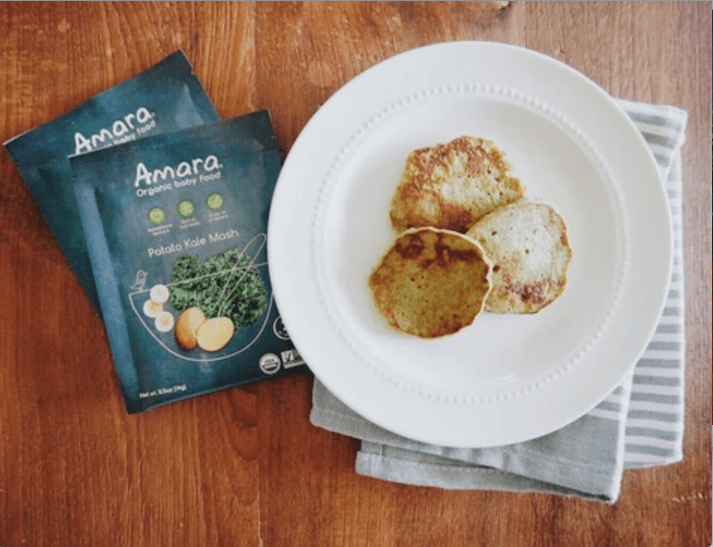
(To be clear — I wouldn’t recommend going out and buying Amara for a toddler — it’s designed first and foremost as a puree for babies — but it’s a nice perk if you also have an older child or find yourself with packs leftover once you’ve moved on to more exciting menus.)
Cost
The average jar of organic baby food costs ~$1.25 — 1.50 per jar (most jars are 4 oz). At full price, each Amara pouch is ~$2.50 if you bought a bulk pack (though each pouch only makes ~3.5 oz food). Amara does offer a subscription program, though, which would bring down the average price per pouch to ~$2 — which is better, but still more than what you’d find at the store.

So yes, Amara is technically more expensive than your run-of-the-mill organic baby food jars, but the quality of the product is way ahead of the jars of baby food purees lining the shelves in your typical grocery store as far as I’m concerned, and well worth the difference if you can afford it.
Bottom line: I think Amara is the best off-the-shelf baby food out there. Period.
You can purchase directly from Amara, or at Whole Foods or Amazon, and many regular grocers are starting to stock it now, too.
If you purchase from Amara’s website, get 15% off plus free shipping on variety packs with the code LUCIESLIST. Eat up, babies!